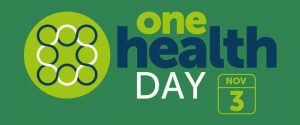Successful treatment of postural orthostatic tachycardia and mast cell activation syndromes using naltrexone, immunoglobulin and antibiotic treatment
Leonard B Weinstock Jill B Brook, Trisha L Myers, Brent Goodman ( Not Lyme specific but interesting)
A tale of two syndromes: Lyme disease preceding postural orthostatic tachycardia syndrome.
Noyes AM, Kluger J. Ann Noninvasive Electrocardiol. 2015 Jan;20(1):82-6. doi: 10.1111/anec.12158. Epub 2014 May 15.
Kanjwal K, Karabin B, Kanjwal Y, Grubb BP.
Abstract
BACKGROUND:
A subgroup of patients suffering from Lyme disease (LD) may initially respond to antibiotics only to later develop a syndrome of fatigue, joint pain and cognitive dysfunction referred to as ‘post treatment LD syndrome’. We report on a series of patients who developed autonomic dysfunction in the form of postural orthostatic tachycardia syndrome (POTS).
METHODS:
All of the patients in this report had suffered from LD in the past and were successfully treated with antibiotics. All patients were apparently well, until years later when they presented with fatigue, cognitive dysfunction and orthostatic intolerance. These patients were diagnosed with POTS on the basis of clinical features and results of the tilt table (HUTT) testing.
RESULTS:
Five patients (all women), aged 22-44 years, were identified for inclusion in this study. These patients developed symptoms of fatigue, cognitive dysfunction, orthostatic palpitations and either near syncope or frank syncope. The debilitating nature of these symptoms had resulted in lost of the employment or inability to attend school. Three patients were also suffering from migraine, two from anxiety and depression and one from hypertension. All patients demonstrated a good response to the employed treatment. Four of the five were able to engage in their activities of daily living and either resumed employment or returned to school.
CONCLUSIONS:
In an appropriate clinical setting, evaluation for POTS in patients suffering from post LD syndrome may lead to early recognition and treatment, with subsequent improvement in symptoms of orthostatic intolerance.


